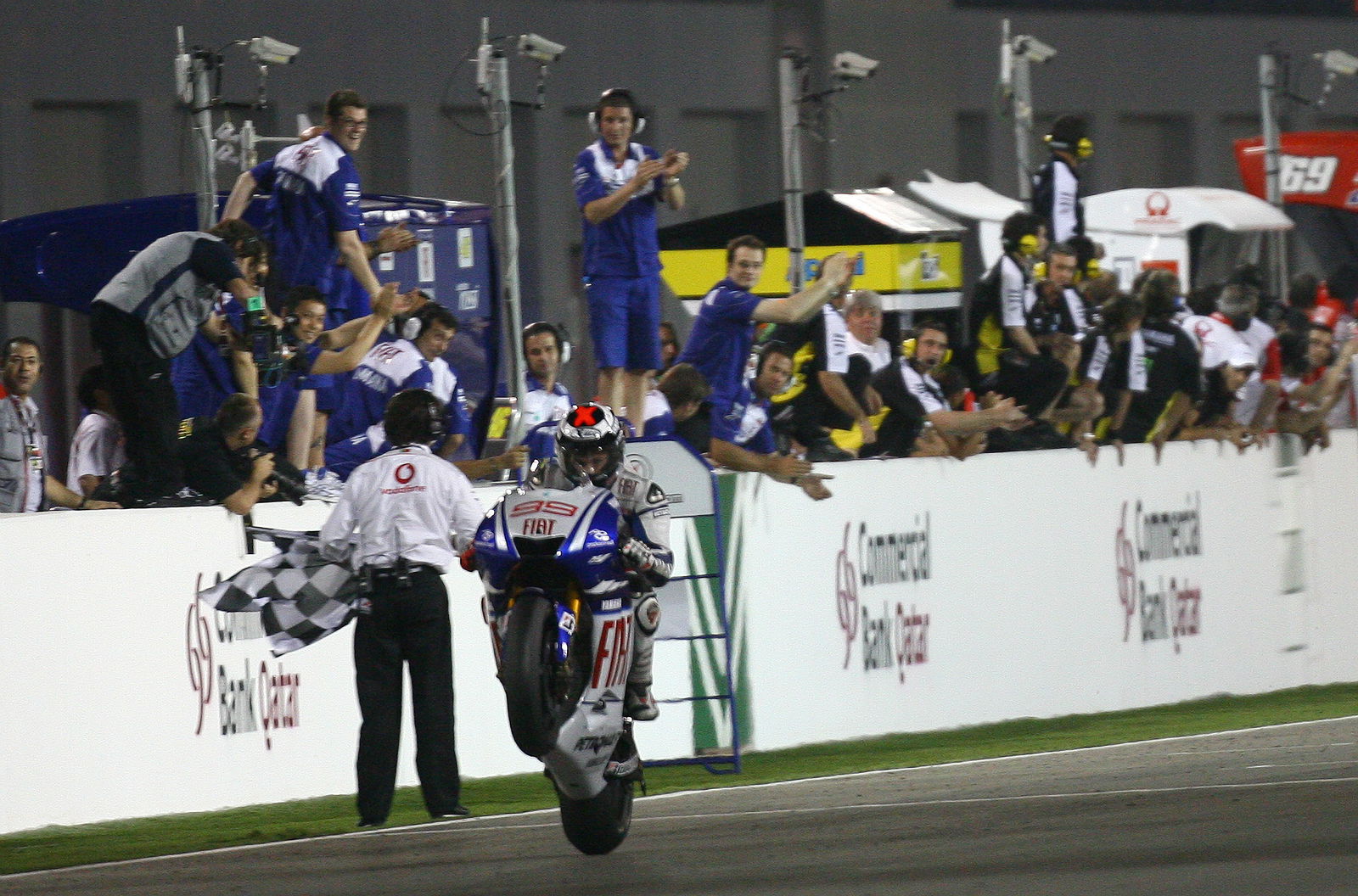Ducati explains MotoGP chassis technology.
Ducati's carbon fibre chassis made an instant impact by winning its very first race, in the hands of Casey Stoner, on Monday night's 2009 Qatar MotoGP season opener.
Ducati's leap from steel trellis to carbon fibre monocoque - bypassing the aluminium favoured by its Japanese rivals - has been the main talking point of the GP9 since it made an early public debut during last June's post-race test at Catalunya. A carbon fibre swingarm was also introduced at the Qatar test in early march.

Ducati's carbon fibre chassis made an instant impact by winning its very first race, in the hands of Casey Stoner, on Monday night's 2009 Qatar MotoGP season opener.
Ducati's leap from steel trellis to carbon fibre monocoque - bypassing the aluminium favoured by its Japanese rivals - has been the main talking point of the GP9 since it made an early public debut during last June's post-race test at Catalunya. A carbon fibre swingarm was also introduced at the Qatar test in early march.
Carbon fibre is light, strong and extremely stiff - but also has different mechanical properties in different directions, depending on how the fibres are laid, opening up a range of new possibilities.
However, Ducati Corse general manager Filippo Preziosi said in June that it is the change in shape that is most important. "The fact we've used carbon fibre in the production of the chassis is not the most relevant point, it is more the shape that is different from before," he declared. The new shape allows for a much improved airbox design.
For the riders, the main benefits have been in terms of stability, during braking and cornering.
"There is not a big difference between the GP8 and GP9 - the level in MotoGP is so high it is difficult to find a big gain - but there is a good advantage with the carbon chassis," former Ducati test rider and 2009 MotoGP rookie Niccolo Canepa told during the winter.
In a feature documenting the evolution of its MotoGP chassis technology since 2003 (see below), Ducati calls the carbon fibre chassis the GP9's "most significant innovation".
But aside from the technical advantages, it is worth noting that Ducati's carbon fire switch is also clever tactically.
By refusing to adopt the technology of its rivals - and enjoying instant success - Ducati will have effectively 'forced' the Japanese teams to start (or revive) carbon fibre chassis/swingarm projects of their own.
This is an unwelcome distraction at a time when they are seeking to refine their own '09 machines, and face budget pressure due to the financial crises, but the price of failing to spot such potential performance advantages early could be devastating.
For such reasons, any new technology spotted in F1 - even if introduced by the smallest, underperforming, team - is always investigated by the leading teams, to avoid the risk of being 'caught out'.
The full Ducati feature can be seen below:
'The most significant innovation of the Ducati Desmosedici GP9 is the monocoque frame in carbon fibre composite.
'The technical selection of this type of frame is the next step in the advancement of the bike that has undergone previous major developments in its GP3 [2003] and GP7 [2007] versions.
'The concept of the engine casing has been the guideline of the Desmosedici project. The objective is to create a chassis set-up in which each element carries out a specific function, to obtain the desired rigidity with as little weight as possible, thus attaining maximum efficiency.
'The engine, the main frame, the rear sub-frame, the rear suspension system (comprising swing-arm and linkage) and the front suspension system are the main components of the bike.
'The basic idea is to abandon the classic concept of the chassis as the element that connects all other elements, in favour of a design in which the engine is the central element to which the main frame, rear sub-frame and rear suspension system are individually connected.
'The GP3 was unique in having a rear swing-arm that was attached solely to the engine. In particular both the swing-arm pivot and the suspension linkages were connected directly to the engine without any attachment to the main frame.
'The GP7 featured a main frame that was totally detached from the rear sub-frame. Basically the engine was the central element of the bike. The main frame was used as link between the engine and the steering head. The rear sub-frame linked the engine to the seat and to the footpegs and controls. The two frames, main and rear sub-frame, that were still linked to each other on the GP3, were now only attached to the engine on the GP7, meaning that they were smaller and lighter.
'On the GP9 the main frame is formed to connect the engine to the steering head. The main frame now also incorporates the air-box in one single construction. This monocoque construction allows the air-box to function efficiently within the main frame.
'Choosing to utilise the carbon fibre composite technology to create the frame means that, on the one hand, one can mould the piece into the desired form without incurring enormous equipment costs and, on the other hand, varying levels of rigidity and torsional characteristics can be attained simply by altering the type, the number and the directional orientation of the carbon fibres, using the same equipment.
'In testing carried out up until now the GP9 guarantees greater precision and stability in breaking and on entering corners. We maintain, however, that only by using it to race on the various world circuits will we be able to properly evaluate the potential of this technical solution. Employing the said technical solution in competition at the maximum level is the only way to effectively assess it in all its aspects.'


